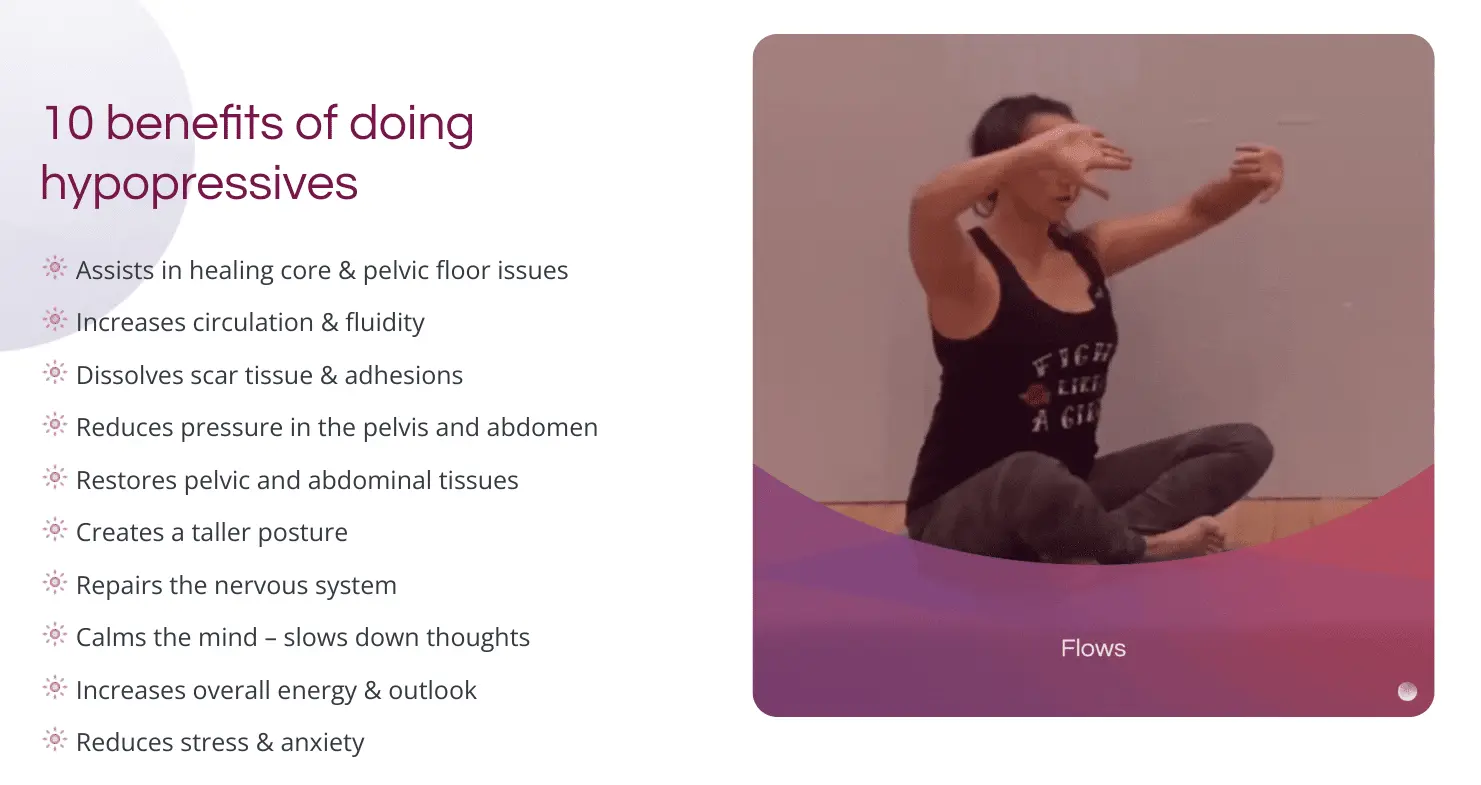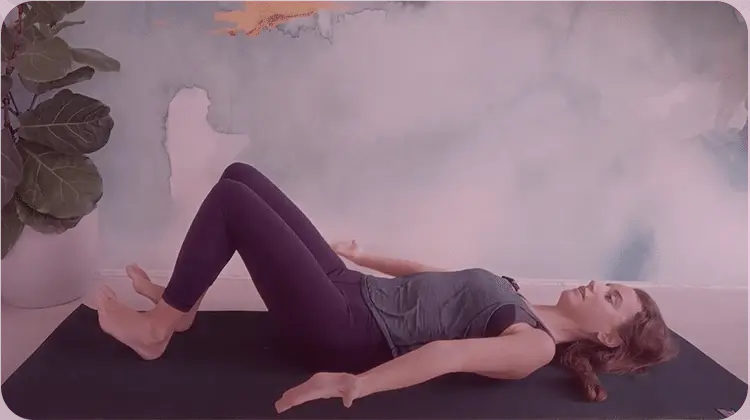How to Fix Diastasis Recti Years Later
- October 5, 2022
- Diastasis Recti

Ready for some good news? Silly question, right…because who doesn’t love good news?
Well, here it is. If you’re wondering “Can diastasis recti heal 1, 2, 10, or 20 years after pregnancy?” you’ll be happy to hear that the answer is, YES! You can heal diastasis recti no matter how long it’s been since your last (or only) pregnancy.
Sounds too good to be true? It’s natural to feel a bit of skepticism, especially if you’ve been told that the only way to get rid of diastasis recti is by having surgery.
Stick around until the end of this blog post, and you’ll understand why and how it’s possible to close an abdominal separation and heal diastasis recti even if it’s been there for years and years.
For those of you who aren’t sure what Diastasis Recti (DR) is exactly or if you have this, let’s start off with a bit of background on this super common condition.
How common is Diastasis Recti?
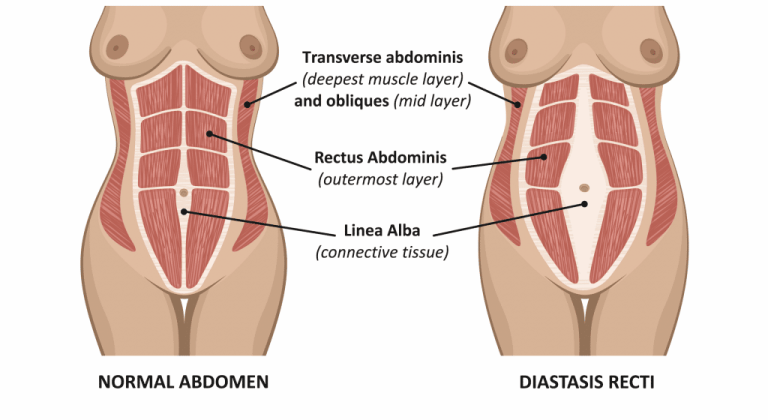
Diastasis Recti (also known as abdominal separation) is the separation or gap between the abdominal muscles that occurs when the connective tissue that joins them gets stretched apart, which occurs with a growing belly during pregnancy.
Given this definition of DR 100% of pregnant women will experience this separation. It’s how our bodies are designed to accommodate that growing baby. What makes this condition a problem is when the gap or separation remains after giving birth.
Up to 60% of women will still be affected by symptoms of Diastasis Recti 6 months postpartum and possibly beyond. Also, women who’ve had multiples, like twins or triplets, and women who’ve had more than one pregnancy, are more likely to be impacted by this condition.
And DR is not just a cosmetic problem, it can create many physical limitations and cause debilitating pain.
DR is common, yet many women aren’t aware they have it
Besides the high occurrence of this condition, what’s even worse is that many women don’t know what Diastasis Recti is before dealing with the condition themselves. You might relate to this. Were you checked for DR at your postpartum visits?
If the answer is no, you aren’t alone. As common as this condition is, it’s not always talked about by doctors and healthcare providers, which is disheartening.
This causes many women to be blindsided by DR. There’s no warning and no ‘heads up’, which just adds frustration to an already frustrating situation.
I can relate because I was in this situation too.
This is why I wanted to write this blog and give you some hope. And to let you know that even if you have diastasis recti 20 years after pregnancy, you can close the gap, heal the symptoms and get back to being you and enjoying the things you love.
The first step to getting there is to know if DR is present. And you can do this with a self-check at home.
How to check for Diastasis Recti
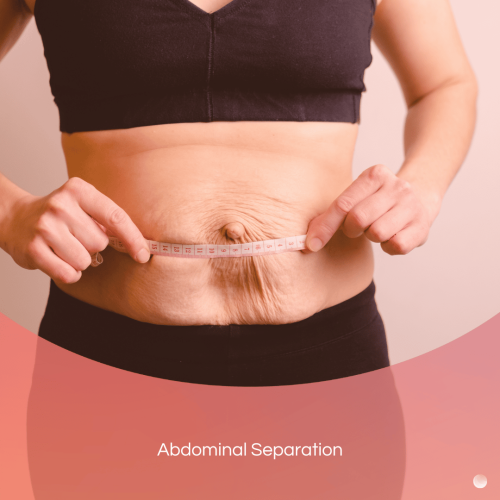
You can check diastasis recti by performing 2 short tests from the comfort of home. To do these tests, you’ll need to lay down on a flat surface, such as a rug or yoga mat. While on your back, bend both of your knees, and place your feet flat on the ground.
Where to measure (points)
There are three points where you can take measurements as part of the self-test for DR. These points are located:
- Between sternum and belly button
- At the belly button
- And midway between the belly button and the lower belly
At each of these points, you want to look for 2 different things.
The first is measuring the width of the separation. You can either use a tape measure (in cm) or you can measure with your fingers. If using your fingers, you’ll want to see how many fingers can fit between the separated abdominal muscles.
The second measurement is to assess the health of the connective tissue in your abdomen. To do this test, you’ll want to see how deep you can sink your fingers into your stomach. When connective tissue gets thin and weak, it offers less resistance to pressure.
How to measure DR
When taking measurements for the gap (or width) in between your abdominal muscles, you want to point your fingers down towards your pelvis.
Then lift your head up a little bit off the mat and see if you can feel the edges of the recti muscles as they contract. When you lower your head down to the floor, you should feel those muscles relax out to the side a little bit.
You may need to practice this a few times to get used to it and to get an accurate count of how many fingers you can fit in between the gap as the muscles relax out to the side.
If more than 2 fingers fit in between your abdominal muscles, then it’s likely that diastasis recti is present.
For the test to gauge the health and strength of your connective tissue, measure how deep your finger can push down into your stomach. If you can push all the way down to your first knuckle, this could also indicate diastasis recti. The goal is to barely be able to push down on the connective tissue.
How to correct Diastasis Recti
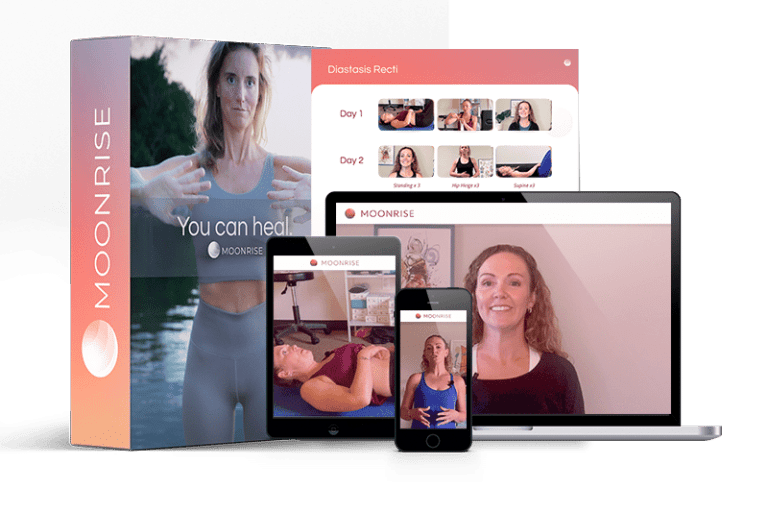
Many women are told that surgery is the answer for getting rid of diastasis recti. Yet, that’s not the only option nor is it the safest one.
There are safe exercises you can do from home that were designed to heal diastasis recti. These types of exercises target the linea alba (connective tissue in the abdomen) and the transverse muscle (your deep “corset” muscle) in a way that helps strengthen and repair the tissue, which in turn, helps close the abdominal separation.
So, when looking to fix diastasis recti – no matter how long it’s been there – it’s just as important to know which exercises to do as it is to know which exercises not to do.
What exercises to avoid with Diastasis Recti
When symptoms of DR such as a belly pooch or pregnant-looking belly are present, it’s common to think, “let me do core strengthening exercises.”
But sadly, these are some of the worst exercises to do with DR because it adds excess pressure in the abdomen and puts more strain on the connective tissue.
Some exercises to avoid with diastasis recti include:
- Planks
- Crunches
- Bicycle crunches
- Sit-ups
These exercises are popular for many, but doing them with DR isn’t the best idea without guidance, such as working with a DR rehab coach or another trained professional. They know how to make modifications to these popular exercises and will know when you are ready to start doing them.
Just like knowing which exercises to avoid and which ones to do – it’s also helpful to know about timing. For instance, knowing how long to exercise each day, how many reps you can do, and if you’re ready for certain modifications. These are all important pieces of information to know as they are vital to your recovery and success.
How long for Diastasis Recti to heal

One of the biggest misconceptions when it comes to health is the belief that “it’s too late to heal.”
When it comes to healing Diastasis Recti, this is certainly not the case.
The body is always striving towards homeostasis, or internal balance. In other words, the body is designed to heal, it wants to heal, and it knows how to heal. Yet, we need to work in harmony with the body (and mind) for healing to happen easier and quicker. But doing the ‘wrong exercises’ or not having a healing mindset can slow down healing or put it to a standstill.
So, when it comes to answering the question, “how long does it take for diastasis recti to heal,” there’s not an exact answer for this. But I have seen consistent results with the hundreds of women I’ve worked with. When they work 1-to-1 with me and follow the exercises I give them, make modifications to everyday life and movements, and commit themselves to a daily routine for 12 weeks, they experience wonderful progress and physical results.
Working With a Trained DR Specialist
I have my own practice where I work with women in person, and my desire is to help more women outside of my immediate area by working with them online. The goal is to make healing DR accessible, affordable, and safe for women who might not have a knowledgeable DR specialist close by.
In fact, if you want to meet me live and get some helpful tips and your questions answered about DR, I am hosting a free webinar called “How to self-test for DR and 5 mistakes to avoid to start healing”.
There are limited spots available, so please sign up here and get more details and information about this Live Free Webinar.
Blog posts you might like:



